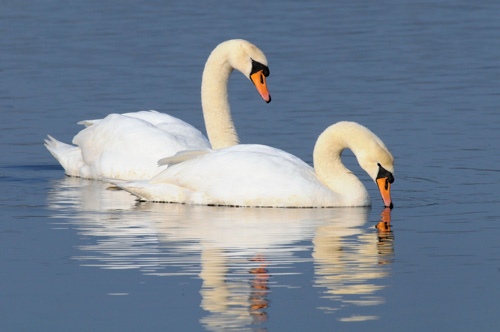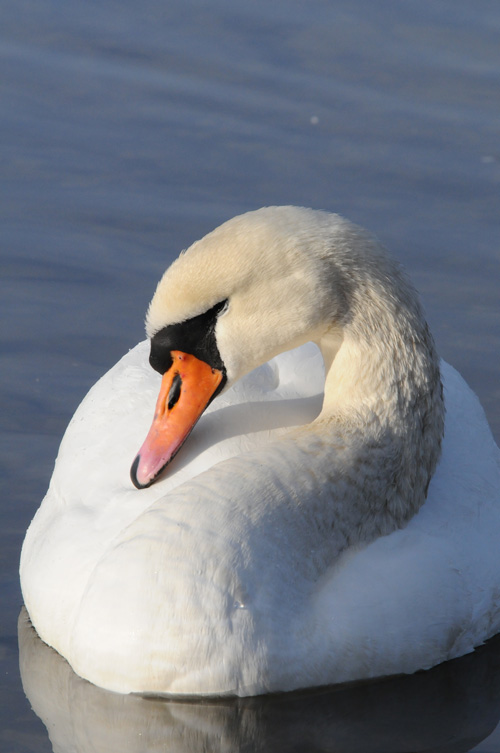The mute swan
- Denmark's national bird
In English, this swan is known as the mute swan as, unlike whooper swans and Bewick's swans, it has no voice. On the other hand the wings make a screeching sound when the swan is flying.
The mute swan feeds on grass, grain and water plants, which it grazes on in shallow water along the lake shores and inlets.
The mute swan breeds in lakes, watercourses and inlets. It builds its nest on a platform of plant material, ideally on the edge of a reedbed.
Along the river Kongeå, the mute swan is a common breeding bird by mill dams as well as some places by the actual river.
The ugly duckling
The mute swan's Danish name (Knopsvanen, literally meaning 'the knob swan') refers to the black knob it has over its orange beak. In 1984, the mute swan was named Denmark's National bird, probably because of Hans Christian Andersen's famous fairy tale about the ugly duckling that turns into a beautiful swan.
With a length of up to 160 cm and a wingspan of up to 238 cm, the mute swan is Denmark's largest bird.
Broken arm
The mute swan often nests in parks and other places where there are many people. But do not get too close to the swan's nest with chicks. The males can be particularly aggressive and there are stories about swans that have actually broken a person's arm.

Facts about the mute swan
Length 145-160 cm
Wingspan 208-238 cm
The male is larger than the female.
The mute swam is white with an orange-red beak. It has a distinctive black knob over the beak. The legs are dark grey.
In the early 1900s, the mute swan was almost extinct in Denmark because of hunting. In the 1920s, there were only 3-4 breeding pairs left. Today, the mute swan is common throughout the country and has almost 5,000 breeding pairs.


